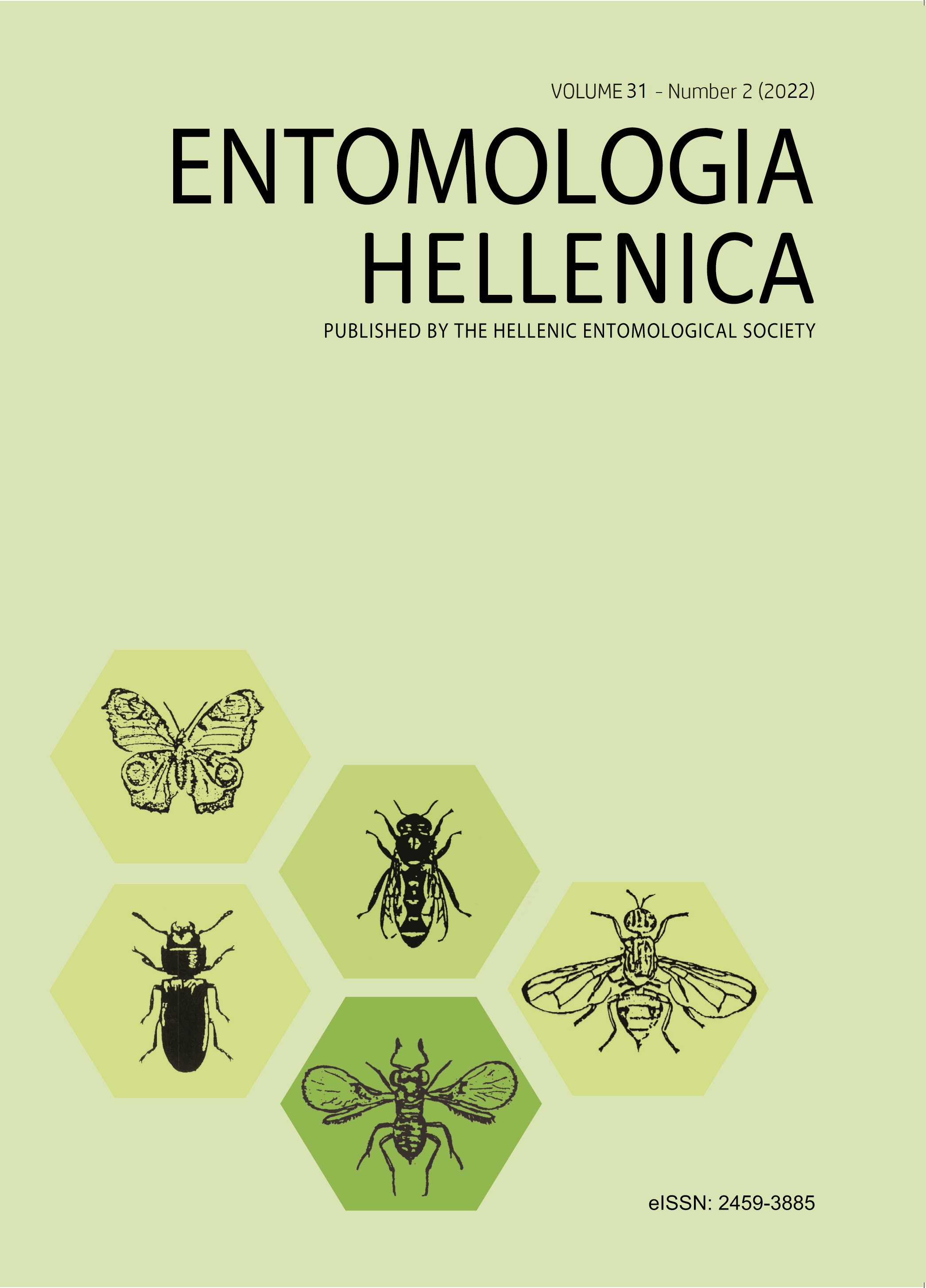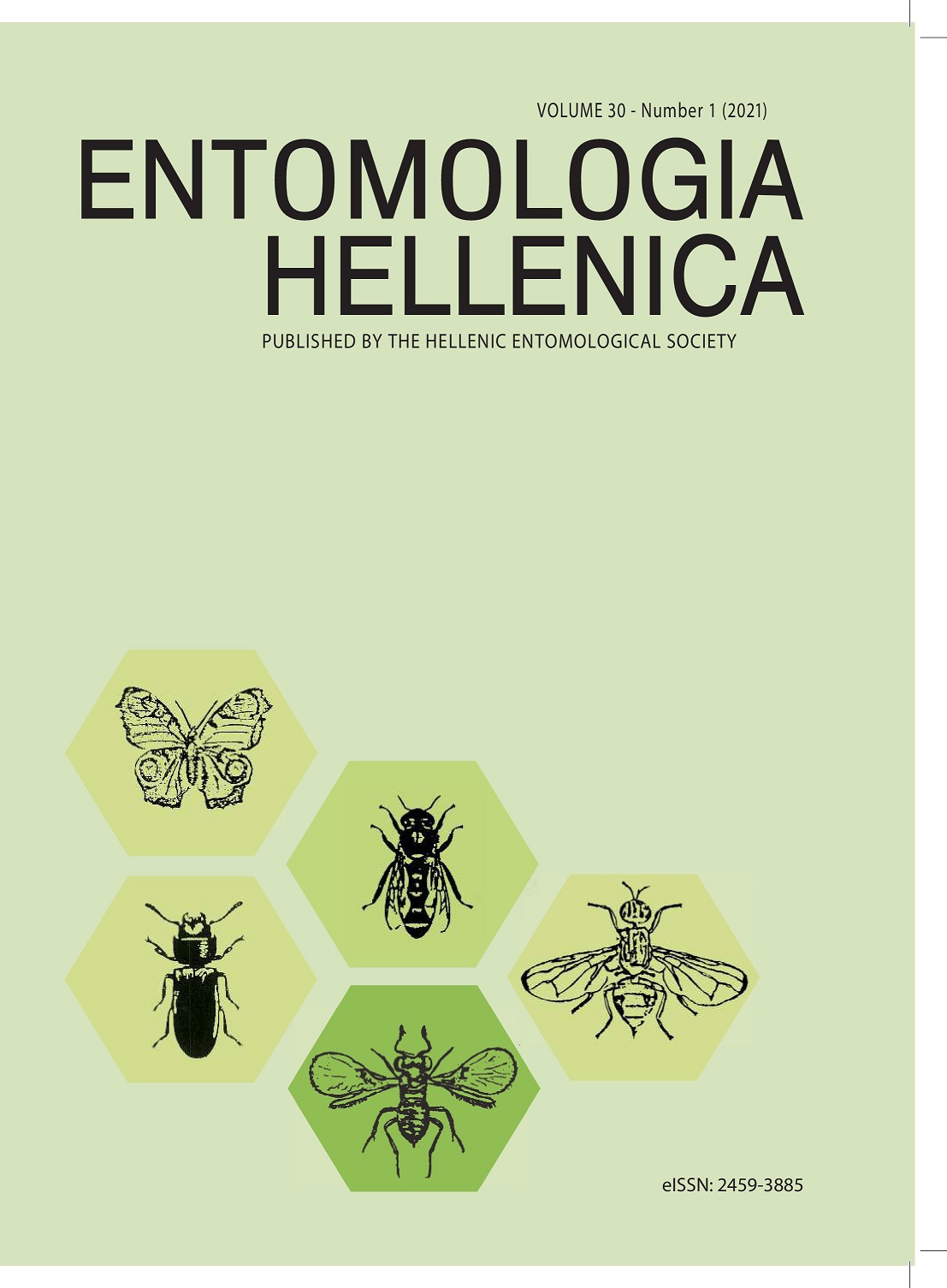Evaluation and economic analysis of ecofriendly biological approaches for the management of shoot and fruit borer (Earias vittella F.) of okra

Abstract
During the years 2020 and 2021, the effects of various biopesticides and the egg parasitoid Trichogramma chilonis on the okra shoot and fruit borer were investigated in open fields. All interventions outperformed over the untreated control. The entomopathogenic bacterium Bacillus thuringiensis was the most promising biopesticide tested, with the lowest shoot (5.49% and 6.87% in 2020 and 2021, respectively) and fruit damage (4.95% and 5.65% in 2020 and 2021, respectively), followed by the entomopathogenic fungi Beauveria bassiana (7.08%, 8.04% shoot damage and 6.78% and 6.73% fruit damage during 2020 and 2021, respectively). Interestingly, all biopesticides evaluated were shown to be safe for the polyphagous predators occurring in the okra habitat, such as the ladybird beetles Menochilus sexmaculatus and Micraspis discolour and the spiders Marpissa spp. and Oxyopes lineatipes. However, emamectin benzoate 5% SG was the most effective treatment in terms of minimizing okra shoot and fruit damage, resulting in a maximum percent reduction over control (PROC) (85.54 and 80.90 against shoot damage and 76.60 and 71.33 against fruit damage during 2020 and 2021, respectively). Each treatment's economics were also analysed. The experimental plots treated with emamectin benzoate had the highest cost:benefit ratio (1:11.16), while B. thuringiensis had the highest (1:7.06) among the biopesticide / parasitoid releasing plots.
Article Details
- How to Cite
-
Halder, J., Pandey, K. K. ., & Behera, T. K. . (2022). Evaluation and economic analysis of ecofriendly biological approaches for the management of shoot and fruit borer (Earias vittella F.) of okra. ENTOMOLOGIA HELLENICA, 31(2), 61–70. https://doi.org/10.12681/eh.30254
- Section
- Articles

This work is licensed under a Creative Commons Attribution-NonCommercial-ShareAlike 4.0 International License.
Authors who publish with this journal agree to the following terms:
Authors retain copyright and grant the journal right of first publication with the work simultaneously licensed under a Creative Commons 4.0 license.
Authors are able to enter into separate, additional contractual arrangements for the non-exclusive distribution of the journal's published version of the work (e.g. post it to an institutional repository or publish it in a book), with an acknowledgement of its initial publication in this journal. Authors are permitted and encouraged to post their work online (preferably in institutional repositories or on their website) prior to and during the submission process, as it can lead to productive exchanges, as well as earlier and greater citation of published work.



